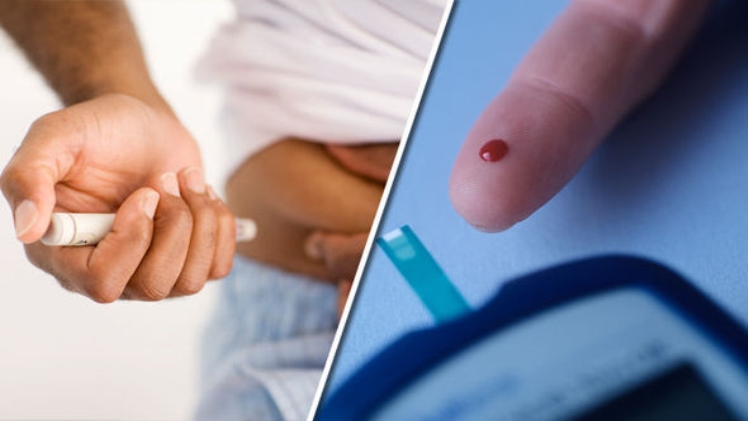Glucose is an essential nutrient that supplies energy to the human body. It is the simplest form of sugar that keeps the body’s tissues and organs active. You can obtain glucose from different carbohydrates and sugary foods. However, an excess amount of glucose in the blood can lead to diabetes, which is a serious ailment. When you undergo a blood sugar test, you need to know whether the blood sugar level mentioned in the test report is normal or on the higher side. So, they should consult the normal blood sugar level chart available online.
Importance of a blood sugar level chart for every person
A blood sugar level chart exhibits all the values of blood sugar levels usually obtained after a fasting sugar test and a postprandial (PP) test. All these values are measured in mg/dl, which is the unit of blood sugar. A normal blood sugar level chart depicts the obvious signs of diabetes when the blood sugar level is higher than the normal range. Therefore, it is useful when you are facing the risk of diabetes, as it alerts you on time to decrease your blood sugar level. The following are the usual blood sugar levels irrespective of the test done before or after meals –
- The normal blood sugar level in the fasting stage is 70 – 99 mg/dl
- The normal blood sugar level after a meal: Below 140 mg/dl
- The blood sugar level in the fasting range for a person having diabetes is 80 – 130 mg/dl
- The blood sugar level after a meal for a person having diabetes: Below 180 mg/dl
Hemoglobin test HbA1c is also useful in measuring a person’s average blood sugar level during the previous couple of months. The result should be below 5.7% for a healthy person and below 7.0% for a person with diabetes.
Importance of blood sugar test in the fasting stage
When blood sugar is tested while you are in a fasting condition, it is medically termed fasting plasma glucose (FPG). Doctors will ask you not to eat or drink before a fasting blood sugar test is conducted. Therefore, the blood needed for this test is usually drawn early before breakfast. It also accurately shows the diabetes normal range, which sets the alarm for you to be in the prediabetes stage, which is just one step before diabetes. It also alerts us about the risk of hypoglycemia, which occurs when your blood sugar level is much below the normal range.
A doctor or medical staff will draw a small amount of blood for this test from the vein in your arms. You can visit the doctor’s clinic or hospital to undergo this stage of the blood test. Your blood sample will be tested in a laboratory to get the awaited report. If this report is normal, you can undergo this test at an interval of 3 years, mainly if you are over 35 years. According to the recommendation of the American Diabetes Association, you should undergo fasting blood sugar tests more frequently if there are other instances of diabetes in your family or you are overweight.
PP or post-meal blood sugar test to detect diabetes
When a doctor recommends a blood sugar test after a full meal, it is medically termed postprandial or, in short, PP blood sugar test. The blood is drawn from your vein after two hours of having your lunch, and then this blood sample is tested in a recognized laboratory. However, it is more commonly suggested that people having diabetes can control the intensity of this ailment through proper medication and changes in their lifestyle.
If your doctor recommends fasting and after-meal blood sugar tests, you may consume 75 gm of sugar or glucose after your blood is drawn out for the fasting blood sugar test. For conducting the PP blood sugar test, you may also have any sweet drink that contains that amount of sugar. According to the normal blood sugar level chart, your blood sugar level should be below 140 mg/dl. If the test report shows your blood sugar level between 140 and 199 mg/dl, you are facing the risk of prediabetes and need to be cautious about reducing your blood sugar level. If your blood sugar level is above 200 mg/dl in this test report, you have diabetes and need medical attention.
The necessity of the HbA1c test for detecting diabetes
A hemoglobin A1C or glycosylated hemoglobin test is done to get an average measurement of your blood sugar level during the last 2-3 months. You do not need to fast before blood is drawn for this test. You can have your usual meal before appearing at your doctor’s clinic or hospital to undergo this process. Though it may not provide an accurate measurement of the blood sugar level, the doctor can still have an assessment of your diabetes’ normal range and prescribe medicines accordingly. However, it is not appropriate for people who are undergoing treatment for HIV or anemia. Unlike other blood test reports, the HbA1c report is mentioned in percentage. The report shows a higher percentage means a higher blood sugar level in your body. So, it is useful for people having diabetes to control the severity of their condition.
Read more about the high blood sugar symptoms and it’s prevention
Therefore, blood sugar tests are very useful in detecting diabetes. You can know your diabetes normal range and work accordingly to live healthier lives. So, it would be best if you did not avoid your recommended blood tests, which can be done in any laboratory that your doctor prefers. The blood sugar level chart will show your health condition, alerting you if there are signs of prediabetes or diabetes.

